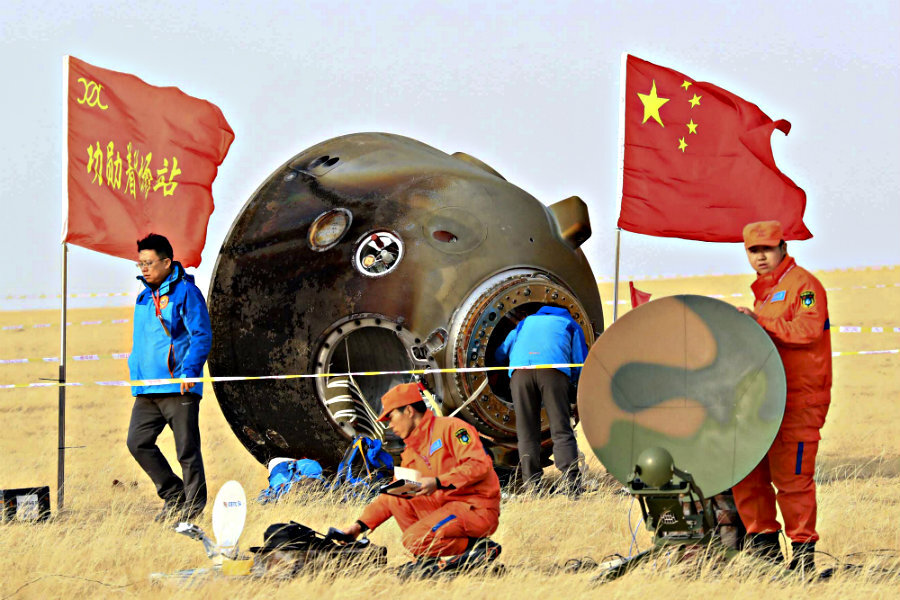China aims to be the first to reach the far side of the moon
After years of attempting to catch up with American and European space agencies, China could be the first to land a probe on the far side of the moon, perhaps as soon as 2018.
A white paper released by China’s cabinet on Tuesday revealed the country’s space strategy for the next five years, indicating that the country’s rumored desire to land a probe on the moon was indeed real and could be accomplished in record time.
“I think it is fantastic! A soft landing, with a rover, to explore FOR THE FIRST TIME on the surface, the far side of the Moon,” Dr. Clive Neal, the chair of the Lunar Exploration Analysis Group, told The Christian Science Monitor in a January interview. “The far side is so different from the side that we see from Earth. It contains the biggest hole in the Solar System – the South Pole-Aitken basin.”
Tuesday’s white paper announced that the proposed Chang’e 4 mission would conduct geological research and low-frequency radio astronomy to better understand the moon's evolution.
The white paper also addressed China’s desire to send a probe to Mars by 2020, in order to "conduct research into major scientific questions such as the origin and evolution of the solar system, and search for extraterrestrial life."
Yet if China does successfully send a rover to the far side of the moon, it won’t merely be significant for space exploration, but where it concerns the United States’ growing concern over China’s space capability.
Despite the head start by American and Russian space programs, in particular, China’s program has bounded ahead, with the pace accelerating rapidly in recent years.
This August, space aficionados bid goodbye to the country’s Jade Rabbit moon rover, which shut down after gathering information on the moon for three years. Its 2013 moon landing was the first soft landing on the moon by any space program since the 1970s.
Just a few months later, in November, the launch of China’s new Long March rocket means that crewed missions to the moon and Mars may not be far away, while a recent monthlong stint in space by Chinese scientists aboard the Tiangong 2 space lab could mean that China is also close to realizing its dream of an independent space station.
"Over the past 60 years of remarkable development since its space industry was established in 1956, China has made great achievements in this sphere, including the development of atomic and hydrogen bombs, missiles, man-made satellites, manned spaceflight and lunar probes,” wrote policymakers in this week’s white paper. One of China’s motivations for pushing its space program forward, according to the policy pronouncement, is to ensure national security.
The Christian Science Monitor’s Jason Thomson reported on US concerns about rising Chinese space power earlier this year:
“China’s aspirations are driven by its assessment that space power enables the country’s military modernization and would allow it to challenge US information superiority during a conflict,” states the 2015 Report to Congress of the China-US Economic and Security Review Commission.
“China’s rise as a space power has important national security implications for the United States, which relies on its own space capabilities to assess and monitor current and emerging threats to national security and project military power globally.”






